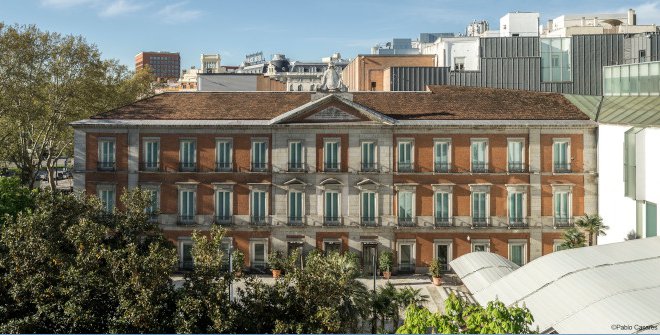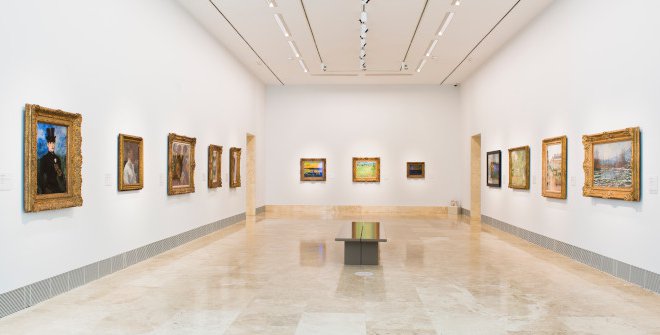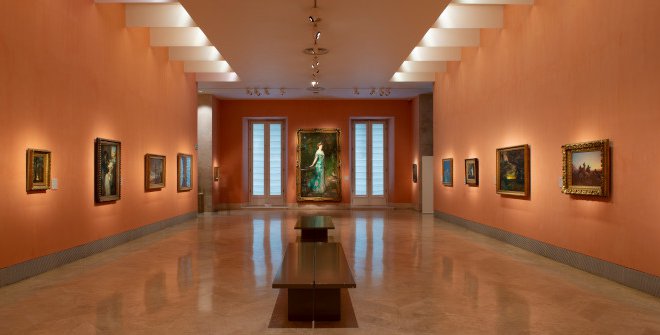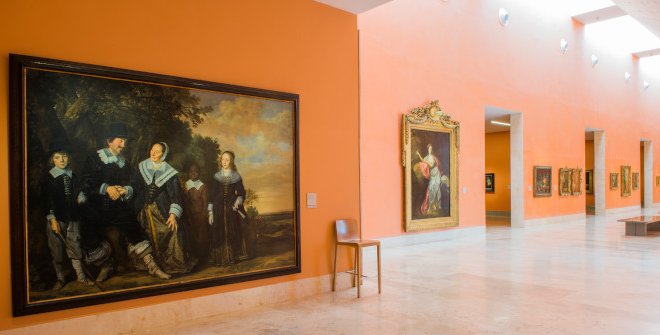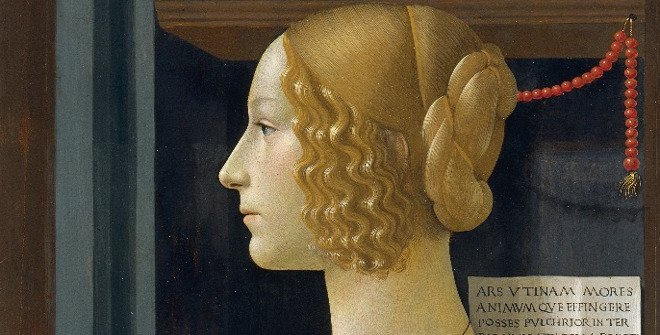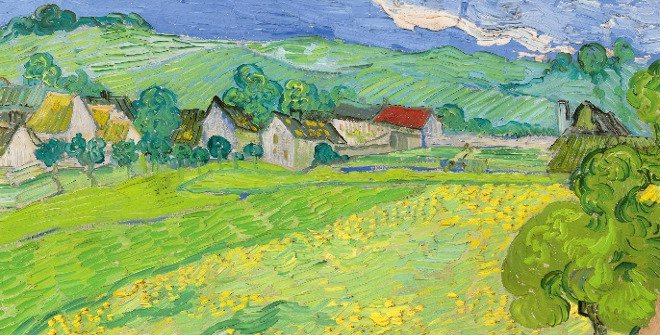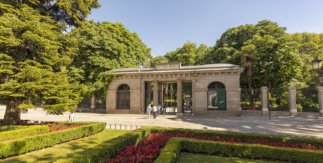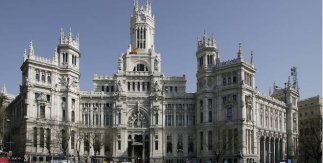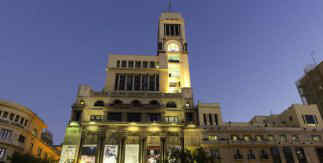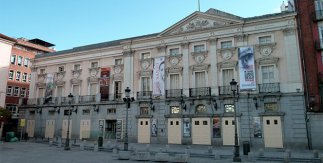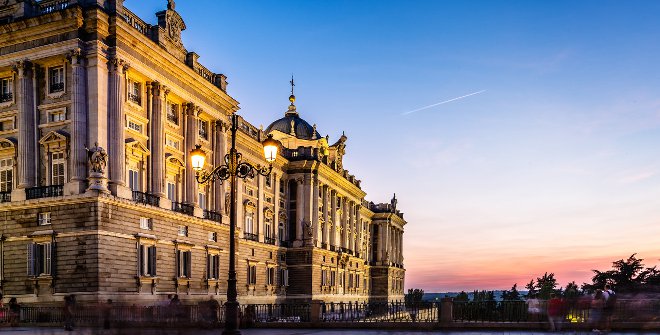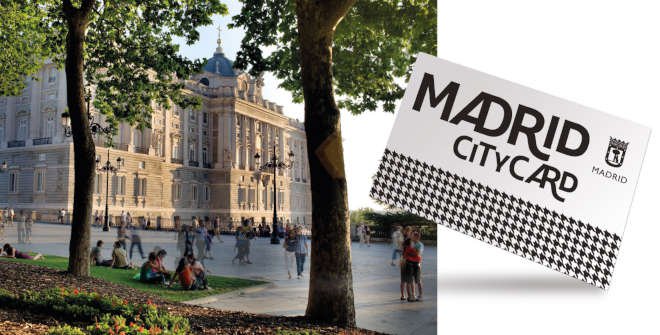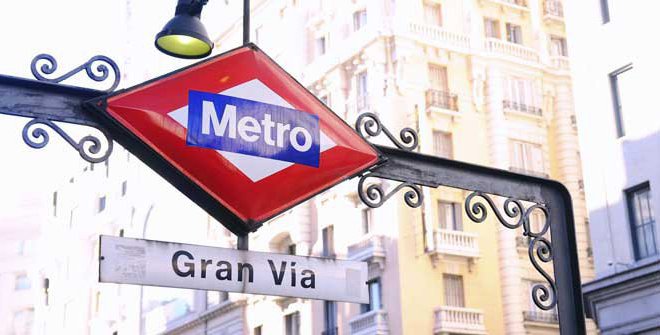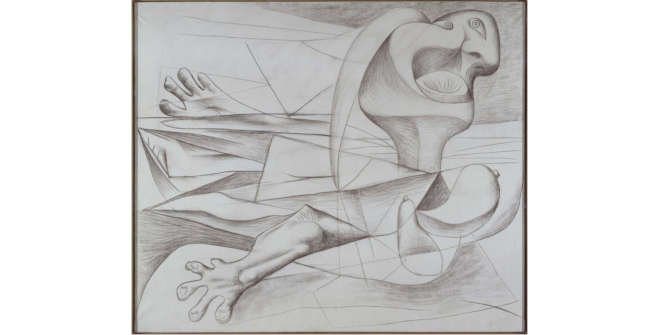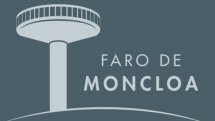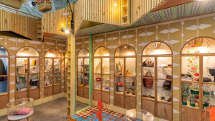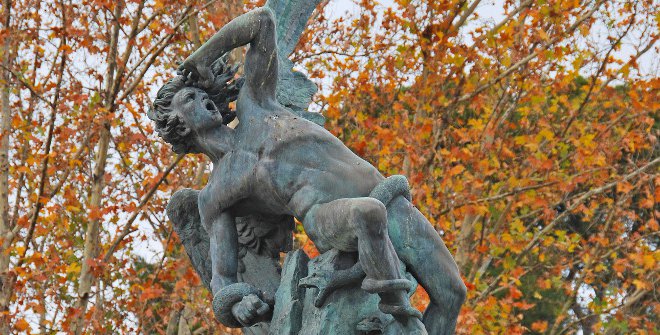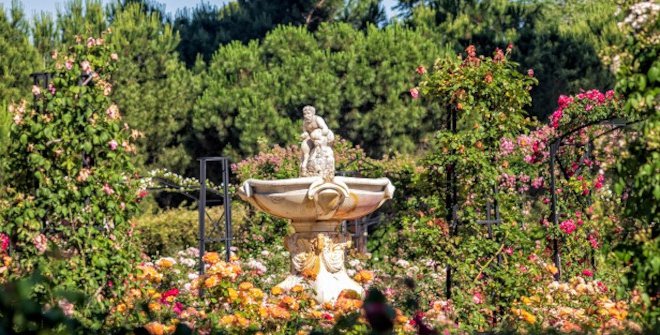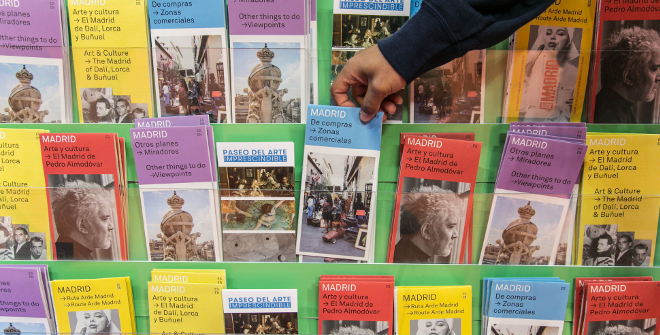Located on the Art Walk , this wonderful museum holds a vast collection that traces the history of European painting from the Middle Ages right through to the late 20th century. Italian primitives, the German Renaissance, 19th-century American art, Impressionism, German Expressionism and Russian Constructivism are the most widely represented schools and movements in the museum, whose impressive collection boasts over 1000 works of art.
Buy the Paseo del Arte Pass
Enjoy free entry to temporary exhibitions (on the ground floor and floor -1) —or, if none are on display, to the Carmen Thyssen Collection —every Saturday night from 9pm to 11pm, thanks to a partnership with Uber.
The collection
The Thyssen-Bornemisza’s collection shines particularly bright in the areas which are underrepresented in other Spanish museums. Paintings from the Trecento (Italian 14th century), like Christ and the Samaritan Woman by Duccio di Buoninsegna, and works by Early Netherlandish artists like The Annunciation Diptych grisaille by Jan Van Eyck are the museum’s finest examples of late medieval art. The museum also houses an exquisite collection of 15th century portraits, including one of Giovanna Tornabuoni by Ghirlandaio and one of Young Knight in a Landscape by Carpaccio . Works by Dürer, Caravaggio, Rubens, Frans Hals and Canaletto help us trace the trajectory of European art between the 16th and 18th centuries.
A visit to the museum offers a wonderful opportunity to study both landscape and genre art, two types of paintings that were particularly popular in the Dutch school of the 17th century and amongst 19th -century American artists. These paintings also inspired Romantic painters, such as Friedrich, Impressionists like Monet and Degas , and Post-Impressionists, like Gauguin and Van Gogh, all of whom are represented in the museum’s collection.
It also boasts important 20th century avant-garde works: fauvism, expressionism, surrealism, abstraction and pop art. Harlequin with a Mirror by Picasso, Picture with Three Spots, No. 196 by Kandinsky, Dream Caused by the Flight of a Bee around a Pomegranate a Second before Waking by Dali, The Cock by Chagall, Hotel Room by Hopper and Woman in Bath by Lichtenstein are some of them.
The Thyssen-Bornemisza collection is spread around the second floor, where the Old Masters until the start of the 19th century are found, and the first floor is devoted to the work of the Modern Masters from impressionism to the 20th century.
The ground floor of the museum, with its own entrance at the start of the main hall, houses the new installation of 180 works from the Carmen Thyssen collection.
VIDEO
Baron Heinrich
The museum’s vast collection is the result of the late Baron Hans Heinrich Thyssen-Bornemisza’s penchant for purchasing works to add to the collection he’d inherited from his father, Baron Heinrich. Initially loaned to Spain for a period of nine and a half years, it was eventually bought by the Spanish state in 1993.
Baron Heinrich started collecting art in the 1920s and during his lifetime he amassed a total of 525 paintings. After his death in 1947, the works were divided amongst his heirs, but his son Baron Hans Heinrich Thyssen-Bornemisza, eager to follow in his dad’s footsteps, set out to buy them all back from his relatives and then continued to acquire new works.
In the 80s it became clear that the rooms in the villa his father had bought in Lugano, Switzerland, to house the collection were no longer large enough and Hans Heinrich started looking for a new location. He received a number of offers from governments and organisations around the world but it was the Spanish government that was most convincing. The baron moved his masterpieces to Villahermosa Palace , a 18th -century building restored by Rafael Moneo which stood just a few metres from Madrid’s magnificent Prado Museum, founding what is now one of the world’s most wonderful museums.
The Carmen Thyssen-Bornemisza Collection
Following the agreement reached in February 2022 between Barons Carmen and Borja Thyssen-Bornemisza with the Spanish Ministry of Culture and Sport to lease part of their collection to the museum, which establishes that a wide selection of international works will remain in the museum for 15 years, with a purchase option at the end of the lease, the Carmen Thyssen Collection is presented with a new installation on the ground floor of the museum, with a direct entrance from the main hall. This new location and presentation enables the collection to be rediscovered with a more coherent and global vision. The display is chronological, starting with 17th century Dutch painting and concluding with 20th century art.
The Carmen Thyssen Collection stems from the natural continuation of the historic family collection and is currently one of the most important private collections in the world. It was presented to the public for the first time in 1996 at the Thyssen-Bornemisza National Museum, in the same ground floor galleries where the new display has now been installed. That exhibition, which was entitled From Canaletto to Kandinsky Masterpieces from the Carmen Thyssen-Bornemisza Collection
The Madrid Region through Art
The Thyssen-Bornemisza Collection, which is located in Madrid’s Art Walk, reflects the magnificent melting pot of styles, characters, periods and ideas that pervaded Western painting from the 13th to the 20th centuries. The museum is therefore one of the cultural benchmarks of Madrid Community and also a reflection of the region in which it is located.
Madrid is a great source of natural, culinary and aesthetic wealth that shares the same spirit that is to be found in many paintings of the Thyssen collection. The Region of Madrid through Art
VIDEO
 museo_thyssen.jpg
museo_thyssen.jpg museo_thyssen_6.jpg
museo_thyssen_6.jpg museo_thyssen_1.jpg
museo_thyssen_1.jpg museo_thyssen_9.jpg
museo_thyssen_9.jpg museo_thyssen_3.jpg
museo_thyssen_3.jpg Museo Nacional Thyssen-Bornemisza
Museo Nacional Thyssen-Bornemisza Museo Nacional Thyssen-Bornemisza
Museo Nacional Thyssen-Bornemisza Museo Nacional Thyssen-Bornemisza
Museo Nacional Thyssen-Bornemisza